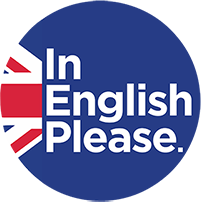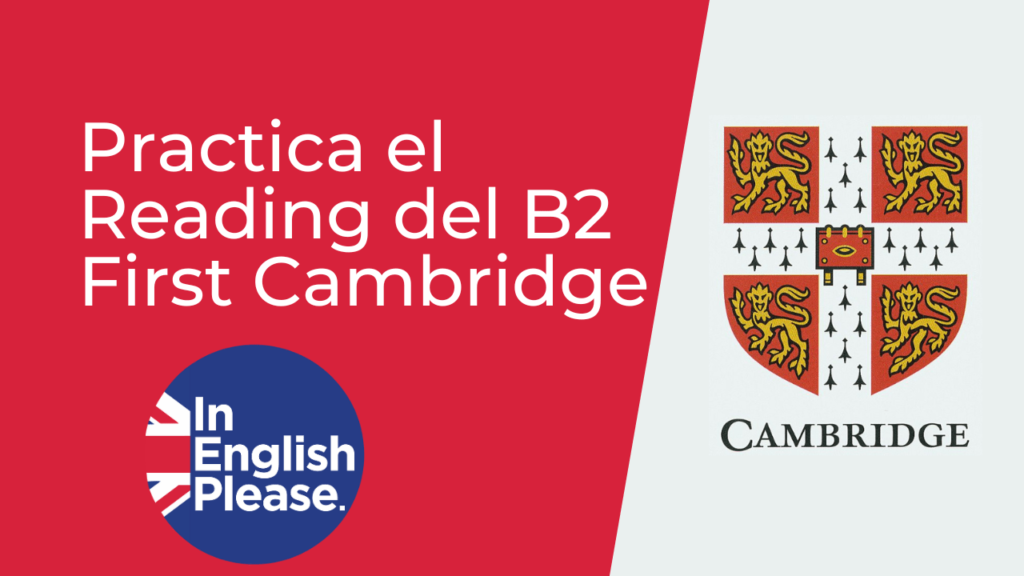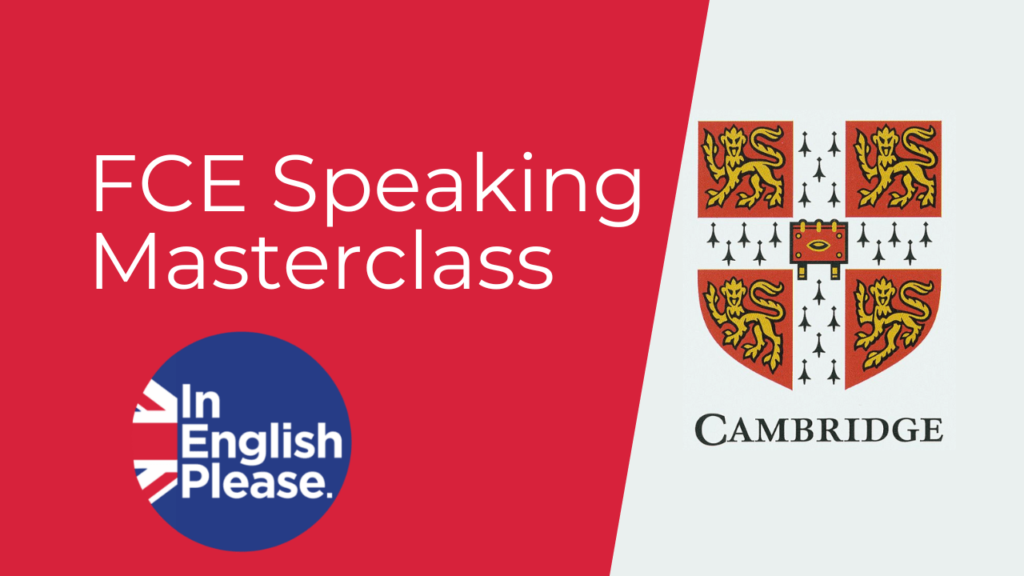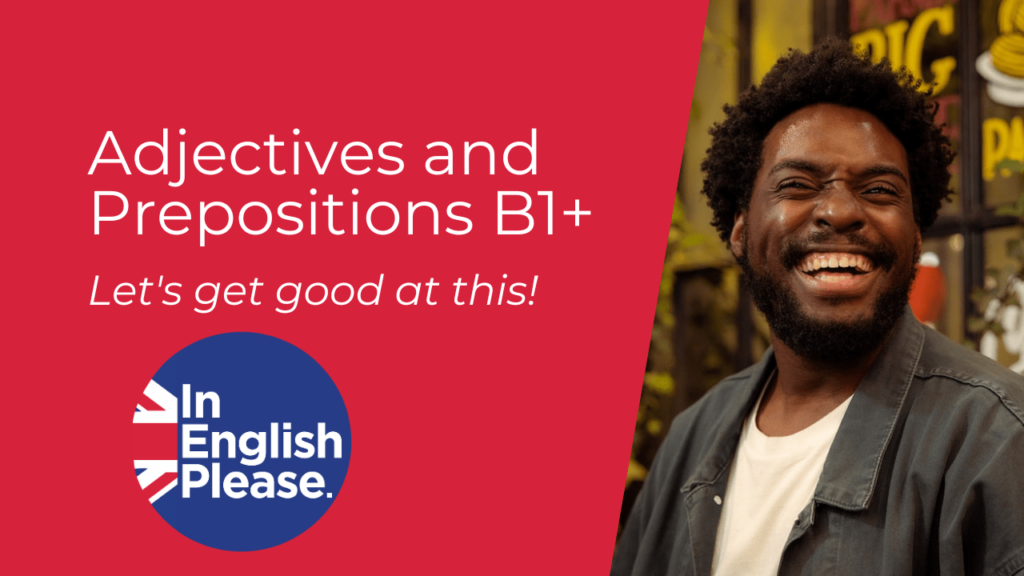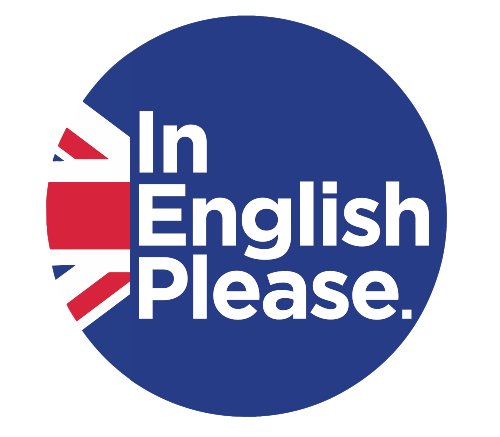
Explicación de las relative clauses en inglés
¿Te lías con las relative clauses en inglés? Es normal, pueden ser un poco confusas al principio, pero vamos a explicarlas de forma directa y clara para que las utilices en tus conversaciones de forma fluida.
Vamos a aprender
Usar who, whom, whose, which y that
Qué son defining clauses y non defining clauses
Cuándo utilizar that
Ejemplos prácticos y ejercicios
No importa si eres principiante o tienes un nivel intermedio de inglés, este artículo te ayudará a aclarar cualquier confusión que puedas tener sobre las relatives clauses. Si tienes dudas sobre tu nivel de inglés puedes comprobarlo rápidamente con este test de nivel con resultados al instante.
Prepárate para ampliar tus habilidades lingüísticas y llevar tu dominio del inglés al siguiente nivel. ¿Estás listo? ¡Comencemos, let’s start!
¿Qué es who, which, that… y todo eso?
Primero vamos a explicar qué son las relative clauses. Es fácil, son las frases que contienen who, whom, whose, which y that.
Who, whom, whose, which y that son pronombres relativos. Sirven simplemente para unir frases o añadir información adicional.
Hay 2 tipos de relative clauses en inglés
Estos pronombres relativos que acabamos de mencionar se pueden usar tanto en una cláusula relativa definida (defining relative clause) como en una no definida (non defining relative clause), dependiendo del contexto.
Es muy fácil:
Cuando existen para unir frases: Defining Relative Clauses
Cuando sirven para añadir información adicional: Non Defining Relative Clauses
No te preocupes, ahora mismo te las enseñamos una por una.
Defining Relative Clauses: Explicación
Vamos a escoger who como ejemplo. Ahora vamos a unir dos frases con who:
Who= Quien
The woman is my neighbor.
She works at the bakery.
→ The woman who works at the bakery is my neighbor.
¡Ya tienes una Defining Relative Clause con who!
Non Defining Relative Clauses: Explicación
También podemos encontrar pronombres cuya función es ofrecer información adicional en la frase. Normalmente vienen entre comas y son muy fáciles de identificar. Por ejemplo:
My brother, who lives in New York, is coming to visit us next week.
Mi hermano, que vive en Nueva York, vendrá a visitarnos la próxima semana
who lives in New York es un detalle adicional que se quiere incluir en la frase. ¡Ya tenemos una Non Defining Relative Clause!
Who – Defining relative clauses
Mira más ejemplos de who para unir 2 frases, es decir, defining relative clauses:
The teacher who taught me in high school is retiring this year. El profesor que me enseñó en la secundaria se jubila este año.
My friend, who lives in Canada, is visiting me next month. Mi amigo, que vive en Canadá, me va a visitar el próximo mes.
The doctor who treated me was very kind and professional. El doctor que me trató fue muy amable y profesional.
The artist who painted this picture is very talented. El artista que pintó este cuadro tiene mucho talento.
Who – Non Defining Relative Clauses
Ahora vamos a ver who en frases cuya función es añadir información adicional, normalmente viene entre comas, o sea, Non Defining Relative Clauses.
My friend, who lives in London, is coming to visit me next week. Mi amigo, que vive en Londres, vendrá a visitarme la próxima semana.
The CEO, who was born in France, gave an inspiring speech at the conference. El CEO, que nació en Francia, dio un discurso inspirador en la conferencia.
Sarah, who is a talented singer, performed at the concert last night. Sarah, que es una cantante con mucho talento, actuó en el concierto anoche.
The cat, who always sleeps on the sofa, is very lazy. El gato, que siempre duerme en el sofá, es muy perezoso.
¿Qué es whom y cómo se usa?
Whom se usa para referirse a la persona que recibe la acción en una oración. Es más formal y lo usarás cuando hablas de alguien que es el objeto de la acción, no el que la realiza.
Aquí tienes un ejemplo de como unir dos frases con whom.
She met a person.
She admires him a lot.
→ She met a person whom she admires a lot.
¿Quieres ver más ejemplos con whom? Puedes pedirselos a la IA, te enseñamos en este post cómo usar chat GPT para aprender inglés.
Whom – Defining relative clauses
Estas frases son Defining Relative Clauses, es decir, unen 2 frases diferentes:
The woman whom you saw at the party is a famous actress. La mujer a la que viste en la fiesta es una actriz famosa.
The student whom the teacher helped passed the exam. El estudiante al que el profesor ayudó aprobó el examen.
The author whom I met at the conference wrote a bestseller. El autor al que conocí en la conferencia escribió un bestseller.
The engineer whom the company hired is highly experienced. El ingeniero al que la empresa contrató es muy experimentado.
The person whom I called last night is my brother. La persona a la que llamé anoche es mi hermano.
Whom – Non Defining Relative Clauses
Ahora vemos ejemplos de whom en non Defining Relative Clauses, es decir, va entre comas y es para dar detalles adicionales
The doctor, whom my family trusts, moved to a new clinic. El doctor, en quien mi familia confía, se mudó a una nueva clínica.
The professor, whom the students respect greatly, is retiring this year. El profesor, a quien los estudiantes respetan mucho, se jubila este año.
My brother, whom you met at the party, is visiting next week. Mi hermano, a quien conociste en la fiesta, viene de visita la próxima semana.
Our neighbor, whom we often help with groceries, is very kind. Nuestro vecino, a quien a menudo ayudamos con las compras, es muy amable.
¿Te está gustando el tema? ¡Aprende más! Pregúntanos por nuestras clases particulares de inglés.
¿Qué es whose y cómo se usa?
Whose se usa para referirse a una persona, animal o cosa que posee algo.
She has a friend.
Her friend’s car was stolen.
She has a friend whose car was stolen.
Whose – Defining relative clauses
Estos ejemplos tienen whose como Defining Relative Clause, ya que unen 2 frases:
The man whose car broke down called for assistance. El hombre cuyo coche se rompió llamó para pedir asistencia.
The family whose house was damaged in the storm received help from neighbors. La familia cuya casa resultó dañada en la tormenta recibió ayuda de los vecinos.
The student whose project won first place was awarded a scholarship. El estudiante cuyo proyecto ganó el primer lugar recibió una beca.
The couple whose anniversary is today is celebrating with a dinner. La pareja cuyo aniversario es hoy está celebrando con una cena.
Whose – Non Defining relative clauses
Vamos a ver whose ahora en Non Defining Relative Clauses:
Mary, whose birthday is next week, is planning a party. Mary, cuyo cumpleaños es la próxima semana, está planeando una fiesta.
My cousin, whose husband is a pilot, travels around the world frequently. Mi primo, cuyo esposo es piloto, viaja por el mundo con frecuencia.
The book, whose cover is illustrated by a famous artist, is very popular. El libro, cuya portada está ilustrada por un artista famoso, es muy famoso.
The building, whose windows are all broken, will be renovated soon. El edificio, cuyas ventanas están todas rotas, será renovado pronto.
¿Qué es which y cómo se usa?
Which es otro de los pronombres relativos que estamos viendo y se utiliza para referirse a animales, cosas o ideas.
Mira como unir 2 frases con which:
I bought a new laptop.
The laptop has a high-resolution screen.
→ I bought a new laptop which has a high-resolution screen.
Cuando utilizamos which para unir 2 frases hablamos de defining clauses.
Which – Defining relative clauses
Mira estas frases con which para unir 2 frases (defining clauses).
The car which broke down is still in the garage. El coche que se rompió sigue en el garaje.
The house which we bought last year needs some repairs. La casa que compramos el año pasado necesita algunas reparaciones.
The book which you lent me was very interesting. El libro que me prestaste era muy interesante.
The movie which we watched last night was thrilling. La película que vimos anoche fue emocionante.
The laptop which I use for work is very fast. El portátil que uso para el trabajo es muy rápido.
Which – Non Defining relative clauses
Ahora mira estas frases con which entre comas, es decir non defining clauses:
Italian cuisine, which is known for its pasta and pizza, is popular worldwide. La cocina italiana, que es conocida por su pasta y pizza, es popular en todo el mundo.
Our house, which we renovated recently, looks brand new. Nuestra casa, que renovamos recientemente, parece nueva.
The novel, which was written in the 19th century, remains a classic. La novela, que fue escrita en el siglo XIX, sigue siendo un clásico.
The Eiffel Tower, which is located in Paris, is a famous landmark. La Torre Eiffel, que se encuentra en París, es un monumento famoso.
¿Cuándo utilizar that?
That es un pronombre relativo que sirve de comodín en muchas ocasiones.
Cuando hablamos de defining clauses (unir 2 frases), podemos usar that para referirnos a personas, animales y cosas.
En particular, podemos sustituir who y which por that.
Mira estos ejemplos con that
The woman who is sitting at the table is my sister.
The woman that is sitting at the table is my sister.
La mujer que está sentada en la mesa es mi hermana.
The car which is parked in front of the house is mine.
The car that is parked in front of the house is mine.
El coche que está estacionado frente a la casa es mío.
The doctor who treated me was very kind.
The doctor that treated me was very kind.
El médico que me trató fue muy amable.
The book which was on the shelf is missing.
The book that was on the shelf is missing.
El libro que estaba en el estante está desaparecido.
The man who lives next door is a teacher.
The man that lives next door is a teacher.
El hombre que vive al lado es profesor.
The movie which won the award is now playing in theaters.
The movie that won the award is now playing in theaters.
La película que ganó el premio está ahora en los cines.
Entonces ¿puedo usar siempre that?
No. Si no, este capítulo de gramática no existiría ni este post 🙂
Pero es verdad que puedes utilizar that bastante a menudo, como hemos mencionado, para reemplazar who y which en defining clauses.
“That” no se usa en cláusulas relativas no definidas (non-defining relative clauses). En ese caso seguiremos utilizando “who” para personas y “which”.
Incorrecto: My brother, that lives in New York, is coming to visit us next week. ❌
Correcto: My brother, who lives in New York, is coming to visit us next week. ✔️Incorrecto: The Eiffel Tower, that is located in Paris, is one of the most famous landmarks in the world. ❌
Correcto: The Eiffel Tower, which is located in Paris, is one of the most famous landmarks in the world. ✔️
Ejercicios para practicar pronombres relativos (Disponible PDF)
Para aprender a usar los pronombres relativos en inglés, nada como practicar con unos ejercicios. Están disponibles en PDF también aquí.
1. Completa con “who”, “that” o “which”
The man __________ helped us yesterday is my neighbor.
My friend, __________ is a doctor, is coming to visit me next week.
The book __________ I borrowed from the library is very interesting.
The movie, __________ was directed by Steven Spielberg, won several awards.
The cat __________ I adopted from the shelter is very playful.
The restaurant, __________ serves delicious pizza, is located downtown.
My cousin, __________ lives in London, is coming to visit us next month.
The car __________ I saw at the dealership was very expensive.
Solución
The man who/that helped us yesterday is my neighbor.
My friend, who is a doctor, is coming to visit me next week.
The book which/that I borrowed from the library is very interesting.
The movie, which was directed by Steven Spielberg, won several awards.
The cat that I adopted from the shelter is very playful.
The restaurant, which serves delicious pizza, is located downtown.
My cousin, who lives in London, is coming to visit us next month.
The car that I saw at the dealership was very expensive.
2. Completa los espacios en blanco con “who”, “whom”, “whose”, “which” y “that”, según corresponda:
The girl __________ bag was lost is my sister.
The teacher __________ I admire is retiring next year.
The house, __________ roof was damaged in the storm, needs repairs.
The man __________ car was stolen reported it to the police.
The book, __________ author won a Nobel Prize, is on sale.
The cat, __________ is black, belongs to my neighbor.
The company, __________ CEO is highly respected, announced a new product launch.
The doctor __________ treated me was very kind.
The team, __________ won the championship, celebrated their victory.
The movie, __________ I watched last night, was amazing.
Solución:
The girl whose bag was lost is my sister.
The teacher whom I admire is retiring next year.
The house, whose roof was damaged in the storm, needs repairs.
The man whose car was stolen reported it to the police.
The book, whose author won a Nobel Prize, is on sale.
The cat, which is black, belongs to my neighbor.
The company, whose CEO is highly respected, announced a new product launch.
The doctor who treated me was very kind.
The team that won the championship celebrated their victory.
The movie that I watched last night was amazing.
Conclusión
Has aprendido:
Usar “who”, “whom”, “whose”, “which” y “that”
Defining clauses: 2 frases unidas
Non defining clauses: una aclaración entre comas
Cuándo utilizar that
Continúa tu aprendizaje en inglés leyendo en nuestro blog. Aquí te proponemos esta lectura corta para nivel intermedio… ¡con curiosidades sobre gatos!
Afina tu oido y aprende expresiones nuevas en nuestro canal de Youtube.
By the way, no solo somos buenos profesores de inglés sino también somos buenos estudiantes de español. Si ves un fallo en nuestro articulo, abajo nos puedes dejar un comentario con la corrección y la revisamos.
Posts Relacionados
Practica las preposiciones en inglés: guía rápida con ejercicios
Preposiciones en inglés ¿cuáles son? Las preposiciones en inglés son palabras pequeñas pero poderosas que indican la relación entre diferentes elementos en una oración. Estas relaciones pueden referirse a lugar, tiempo, dirección, causa, medio o modo. Es cierto que al...
Aprende 3 modales en inglés B1: Should, Would y Could – ejercicios PDF
Aprende a usar los verbos modales en inglés B1 Hablar correctamente en inglés no solo se trata de aprender vocabulario y estructuras (pero si quieres aquí te dejo algunos artículos para refrescar este contenido como Ejercicios de sinónimos y antónimos en ingles –...
It is done: Ejemplos de pasiva en inglés B2 y C1 – Avanzado
Ejemplos de pasiva en inglés B2 En un nivel B2, pasar de activa a pasiva requiere un conocimiento de gramática más avanzado, así que hemos preparado ejemplos de pasiva en inglés B2, para que te hagas una idea. También te invitamos a que eches un vistazo a nuestro...
